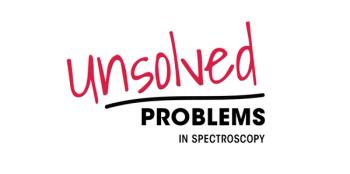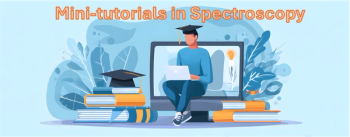
Surface-Enhanced Raman Spectroscopy: Fundamental Research and Practical Applications
An interview with 2014 Charles Mann Award winner Richard P. Van Duyne, the Charles E. and Emma H. Morrison Professor of Chemistry at Northwestern University in Evanston, Illinois.
Surface-Enhanced Raman Spectroscopy: Fundamental Research and Practical Applications
An interview with 2014 Charles Mann Award winner Richard P. Van Duyne, the Charles E. and Emma H. Morrison Professor of Chemistry at Northwestern University in Evanston, Illinois. Van Duyne is known for his research with surface-enhanced Raman spectroscopy (SERS), inventing nanosphere lithography, and developing nanosensors based on localized surface plasmon resonance spectroscopy. In this interview, Van Duyne discusses his group’s work with tip-enhanced Raman spectroscopy (TERS), single-molecule SERS, development of a SERS system for glucose analysis, and SERS as a method for identifying organic colorants in artworks.
Your presentation at SciX 2013 discussed advances in ultrahigh-vacuum TERS, including the first TERS spectra recorded at near-liquid helium temperatures. What is the significance of this achievement in terms of probing molecular interactions?
TERS is a combination of SERS and scanning tunneling microscopy (STM). While STM reveals a great deal of chemical information for the case of “flat” or 2-dimensional (2D) molecules, 3D-molecules appear as “blobs” in STM images. Now with TERS one can get high-resolution vibrational spectra of the “blobs” that provide clear molecular identification. In addition, one can probe the detail of molecule–surface interactions since vibrational spectra are quite sensitive to these interactions.
What are some other examples of the application of TERS in your laboratory?
We have clearly demonstrated that TERS is capable of single-molecule sensitivity using isotopic labels; picosecond pulses can be focused on the tip-sample junction without destroying either tip or molecule; there are “reproducible” excited fluctuations in TERS resonant molecules; and TERS can be used as a new tool in art conservation science to study inks on ancient documents.
A recent publication of yours (1) describes single-molecule surface-enhanced Raman spectroscopy (SERS) using discrete Ag triangular nanopyramids instead of randomly aggregated colloidal suspensions. What are the advantages of using the nanopyramids for single-molecule detection with SERS?
The advantage of using the nanopyramids fabricated by nanosphere lithography is twofold: We can prove that nanogap structures (that is, two or more particles possessing a 1–2 nm gap) are not required to obtain single molecule SERS; and the plasmon resonance of the nanopyramids can be size-tuned to provide maximum sensitivity.
What progress has been made in your laboratory toward integrating femtosecond stimulated Raman spectroscopy with TERS for obtaining time-resolved vibrational structure information of adsorbate molecules?
We have not yet integrated femtosecond pulses with TERS. That is one of our current goals. We have, however, demonstrated TERS with 2–3 picosecond pulses.
Your research group has also worked on developing a SERS system for sensitive and selective detection of glucose. What are the short- and long-term goals of this research, and what has been achieved so far?
We have demonstrated in vivo SERS glucose sensing (in rats) for 17 days with excellent clinical accuracy. The big advantage here is that SERS involves direct rather than enzyme-mediated detection of glucose. Further, once the SERS sensor is implanted we have developed the capability of reading the glucose concentrations through the skin with light — an entirely painless process. The next step is to extend the SERS glucose sensor lifetime to 1 year.
SERS has been employed successfully to identify organic colorants in artworks that are difficult to analyze with normal Raman spectroscopy. How has your laboratory applied SERS to the analysis of dyes used in art materials?
Our group was the first to develop SERS as a means to identify organic colorants in artworks. We have examined pastels by Mary Cassatt, watercolors by Winslow Homer, and oil paintings by Van Gogh and Renoir. This information helps us to digitally reconstruct the original artwork to compensate for fading and provide the conservator with molecular insight into the pigments used by the artists.
Reference
- A.B. Zrimsek, A.-I. Henry, and R.P. Van Duyne, J. Phys. Chem. Lett.4, 3206−3210 (2013).
Newsletter
Get essential updates on the latest spectroscopy technologies, regulatory standards, and best practices—subscribe today to Spectroscopy.





